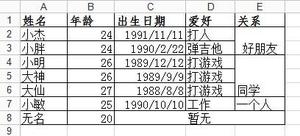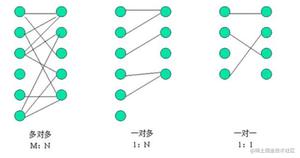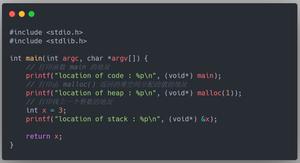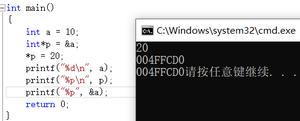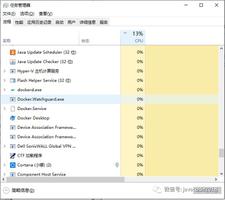SpringCloudGateway限流操作

开发高并发系统时有三把利器用来保护系统:缓存、降级和限流。
API网关作为所有请求的入口,请求量大,我们可以通过对并发访问的请求进行限速来保护系统的可用性。
常用的限流算法比如有令牌桶算法,漏桶算法,计数器算法等。
在Zuul中我们可以自己去实现限流的功能 (Zuul中如何限流在我的书 《Spring Cloud微服务-全栈技术与案例解析》 中有详细讲解) ,Spring Cloud Gateway的出现本身就是用来替代Zuul的。
要想替代那肯定得有强大的功能,除了性能上的优势之外,Spring Cloud Gateway还提供了很多新功能,比如今天我们要讲的限流操作,使用起来非常简单,今天我们就来学习在如何在Spring Cloud Gateway中进行限流操作。
目前限流提供了基于Redis的实现,我们需要增加对应的依赖:
1
2
3
4
<
dependency
>
<
groupId
>org.springframework.boot</
groupId
>
<
artifactId
>spring-boot-starter-data-redis-reactive</
artifactId
>
</
dependency
>
可以通过KeyResolver来指定限流的Key,比如我们需要根据用户来做限流,IP来做限流等等。
IP限流
1
2
3
4
@Bean
public
KeyResolver ipKeyResolver() {
return
exchange -> Mono.just(exchange.getRequest().getRemoteAddress().getHostName());
}
通过exchange对象可以获取到请求信息,这边用了HostName,如果你想根据用户来做限流的话这边可以获取当前请求的用户ID或者用户名就可以了,比如:
用户限流
使用这种方式限流,请求路径中必须携带userId参数。
1
2
3
4
@Bean
KeyResolver userKeyResolver() {
return
exchange -> Mono.just(exchange.getRequest().getQueryParams().getFirst(
"userId"
));
}
接口限流
获取请求地址的uri作为限流key。
1
2
3
4
@Bean
KeyResolver apiKeyResolver() {
return
exchange -> Mono.just(exchange.getRequest().getPath().value());
}
然后配置限流的过滤器信息:
1
2
3
4
5
6
7
8
9
10
11
12
13
14
15
16
17
18
19
server:
port: 8084
spring:
redis:
host: 127.0.0.1
port: 6379
cloud:
gateway:
routes:
- id: fsh-house
uri: lb://fsh-house
predicates:
- Path=/house/**
filters:
- name: RequestRateLimiter
args:
redis-rate-limiter.replenishRate: 10
redis-rate-limiter.burstCapacity: 20
key-resolver: "#{@ipKeyResolver}"
- filter名称必须是RequestRateLimiter
- redis-rate-limiter.replenishRate:允许用户每秒处理多少个请求
- redis-rate-limiter.burstCapacity:令牌桶的容量,允许在一秒钟内完成的最大请求数
- key-resolver:使用SpEL按名称引用bean
可以访问接口进行测试,这时候Redis中会有对应的数据:
127.0.0.1:6379> keys *
1) "request_rate_limiter.{localhost}.timestamp"
2) "request_rate_limiter.{localhost}.tokens"
大括号中就是我们的限流Key,这边是IP,本地的就是localhost
- timestamp:存储的是当前时间的秒数,也就是System.currentTimeMillis() / 1000或者Instant.now().getEpochSecond()
- tokens:存储的是当前这秒钟的对应的可用的令牌数量
Spring Cloud Gateway目前提供的限流还是相对比较简单的,在实际中我们的限流策略会有很多种情况,比如:
- 每个接口的限流数量不同,可以通过配置中心动态调整
- 超过的流量被拒绝后可以返回固定的格式给调用方
- 对某个服务进行整体限流(这个大家可以思考下用Spring Cloud Gateway如何实现,其实很简单)
- ……
当然我们也可以通过重新RedisRateLimiter来实现自己的限流策略,这个我们后面再进行介绍。
限流源码
1
2
3
4
5
6
7
8
9
10
11
12
13
14
15
16
17
18
19
20
21
22
23
24
25
26
27
28
29
30
31
32
33
34
35
36
37
38
39
40
41
42
43
44
45
46
47
48
49
50
51
52
// routeId也就是我们的fsh-house,id就是限流的key,也就是localhost。
public
Mono<Response> isAllowed(String routeId, String id) {
// 会判断RedisRateLimiter是否初始化了
if
(!
this
.initialized.get()) {
throw
new
IllegalStateException(
"RedisRateLimiter is not initialized"
);
}
// 获取routeId对应的限流配置
Config routeConfig = getConfig().getOrDefault(routeId, defaultConfig);
if
(routeConfig ==
null
) {
throw
new
IllegalArgumentException(
"No Configuration found for route "
+ routeId);
}
// 允许用户每秒做多少次请求
int
replenishRate = routeConfig.getReplenishRate();
// 令牌桶的容量,允许在一秒钟内完成的最大请求数
int
burstCapacity = routeConfig.getBurstCapacity();
try
{
// 限流key的名称(request_rate_limiter.{localhost}.timestamp,request_rate_limiter.{localhost}.tokens)
List<String> keys = getKeys(id);
// The arguments to the LUA script. time() returns unixtime in seconds.
List<String> scriptArgs = Arrays.asList(replenishRate +
""
, burstCapacity +
""
,
Instant.now().getEpochSecond() +
""
,
"1"
);
// allowed, tokens_left = redis.eval(SCRIPT, keys, args)
// 执行LUA脚本
Flux<List<Long>> flux =
this
.redisTemplate.execute(
this
.script, keys, scriptArgs);
// .log("redisratelimiter", Level.FINER);
return
flux.onErrorResume(throwable -> Flux.just(Arrays.asList(1L, -1L)))
.reduce(
new
ArrayList<Long>(), (longs, l) -> {
longs.addAll(l);
return
longs;
}) .map(results -> {
boolean
allowed = results.get(
0
) == 1L;
Long tokensLeft = results.get(
1
);
Response response =
new
Response(allowed, getHeaders(routeConfig, tokensLeft));
if
(log.isDebugEnabled()) {
log.debug(
"response: "
+ response);
}
return
response;
});
}
catch
(Exception e) {
log.error(
"Error determining if user allowed from redis"
, e);
}
return
Mono.just(
new
Response(
true
, getHeaders(routeConfig, -1L)));
}
LUA脚本在:
1
2
3
4
5
6
7
8
9
10
11
12
13
14
15
16
17
18
19
20
21
22
23
24
25
26
27
28
29
30
31
32
33
34
35
36
37
38
39
40
41
42
43
44
45
46
47
48
49
50
local tokens_key = KEYS[1]
local timestamp_key = KEYS[2]
--redis.log(redis.LOG_WARNING, "tokens_key " .. tokens_key)
local rate = tonumber(ARGV[1])
local capacity = tonumber(ARGV[2])
local now = tonumber(ARGV[3])
local requested = tonumber(ARGV[4])
local fill_time = capacity/rate
local ttl = math.floor(fill_time*2)
--redis.log(redis.LOG_WARNING, "rate " .. ARGV[1])
--redis.log(redis.LOG_WARNING, "capacity " .. ARGV[2])
--redis.log(redis.LOG_WARNING, "now " .. ARGV[3])
--redis.log(redis.LOG_WARNING, "requested " .. ARGV[4])
--redis.log(redis.LOG_WARNING, "filltime " .. fill_time)
--redis.log(redis.LOG_WARNING, "ttl " .. ttl)
local last_tokens = tonumber(redis.call("get", tokens_key))
if last_tokens == nil then
last_tokens = capacity
end
--redis.log(redis.LOG_WARNING, "last_tokens " .. last_tokens)
local last_refreshed = tonumber(redis.call("get", timestamp_key))
if last_refreshed == nil then
last_refreshed = 0
end
--redis.log(redis.LOG_WARNING, "last_refreshed " .. last_refreshed)
local delta = math.max(0, now-last_refreshed)
local filled_tokens = math.min(capacity, last_tokens+(delta*rate))
local allowed = filled_tokens >= requested
local new_tokens = filled_tokens
local allowed_num = 0
if allowed then
new_tokens = filled_tokens - requested
allowed_num = 1
end
--redis.log(redis.LOG_WARNING, "delta " .. delta)
--redis.log(redis.LOG_WARNING, "filled_tokens " .. filled_tokens)
--redis.log(redis.LOG_WARNING, "allowed_num " .. allowed_num)
--redis.log(redis.LOG_WARNING, "new_tokens " .. new_tokens)
redis.call("setex", tokens_key, ttl, new_tokens)
redis.call("setex", timestamp_key, ttl, now)
return { allowed_num, new_tokens }
以上就是本文的全部内容,希望对大家的学习有所帮助,也希望大家多多支持脚本之家。
以上是 SpringCloudGateway限流操作 的全部内容, 来源链接: utcz.com/z/515664.html



